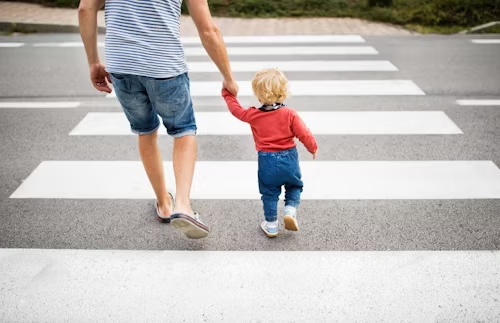
Introduction: Why Pedestrian Safety Awareness Matters
In today’s bustling cities, pedestrian accidents have become an alarming concern, with thousands of lives lost each year due to preventable incidents. Pedestrian safety awareness plays a pivotal role in reversing this trend. By understanding and practicing safe walking habits, individuals can significantly reduce the risk of injury while promoting safer environments for everyone. This article explores the foundations of safety awareness, the role of urban design in protecting pedestrians, and how communities can turn awareness into collective action for safer, smarter streets.
Understanding Pedestrian Safety Awareness — The Foundation of Prevention
Pedestrian safety awareness begins with education and mindfulness. It encompasses understanding traffic rules, staying alert, and making conscious decisions while walking. Distraction is one of the biggest threats to pedestrian safety—whether it’s texting, using headphones, or simply being inattentive while crossing. According to the National Highway Traffic Safety Administration (NHTSA), over 7,000 pedestrians were killed in traffic crashes in the United States in 2022 alone. This statistic underscores the critical need for consistent safety education.
Visibility is another cornerstone of prevention. Wearing bright or reflective clothing, especially during dawn or dusk, ensures that drivers can see pedestrians from a distance. Adhering to crossing signals and using designated crosswalks also drastically reduce the likelihood of accidents. Early education initiatives, such as school-based safety programs and public awareness campaigns, can instill lifelong habits that protect individuals and communities alike.
Community and Urban Design — Building Safer Streets for Everyone
Beyond individual behavior, city infrastructure plays a major role in enhancing pedestrian safety awareness. Well-planned urban design not only improves convenience but also safeguards lives. Cities that prioritize pedestrian-friendly planning have seen marked decreases in accidents. Incorporating features like visible crosswalks, traffic-calming measures, and pedestrian-only zones creates an environment where safety becomes a natural outcome of design.
Successful programs around the world demonstrate how infrastructure and awareness go hand in hand. For instance, cities that improved lighting at intersections and installed motion-activated crossing signals saw a sharp decline in nighttime pedestrian incidents. Effective design strategies include:
- Well-lit sidewalks and intersections
- Clear pedestrian signage
- Timed traffic lights and crossing alerts
These measures don’t just protect pedestrians; they also enhance driver awareness and reduce overall congestion, leading to safer, more efficient communities.
Empowering Individuals and Communities — Turning Awareness into Action
Creating lasting change requires both community engagement and personal responsibility. Local events, awareness campaigns, and social media initiatives play a crucial role in spreading information and inspiring behavioral change. Every individual can contribute to pedestrian safety awareness by being proactive and leading by example.
Here are three simple steps to practice safer walking habits:
- Stay alert and avoid phone distractions.
- Use marked crosswalks and obey all traffic signals.
- Wear reflective clothing in low-light conditions.
Communities thrive when safety becomes a shared value. Volunteers can organize neighborhood watch programs, advocate for better crosswalks, or partner with schools to educate children about safe walking habits. By uniting around this cause, residents can foster a sense of shared accountability and care for their surroundings.
Conclusion: Shaping a Culture of Safe Mobility
Pedestrian safety awareness is more than just following rules—it’s about cultivating a mindset that prioritizes life and community well-being. When individuals, city planners, and organizations work together, they create safer streets where everyone can move freely and confidently. By taking small, consistent actions today, we can build a future where pedestrian safety is not an afterthought but an integral part of everyday life. It’s time to walk with caution, advocate for safety, and shape communities that truly protect their people.
